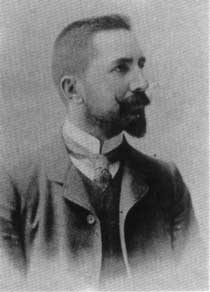|
Strandzha Commune
The Strandzha Commune or Strandzha Republic was a short-lived anarchist commune. It was proclaimed during the Preobrazhenie Uprising in 1903 by Internal Macedonian Adrianople Revolutionary Organization rebels in Strandzha, in the Adrianople Vilayet of the Ottoman Empire. History By 1903, the anarchist Mihail Gerdzhikov was elected as a commander of the Internal Macedonian Revolutionary Organisation's armed guerrilla wing in Thrace, the so-called ''Mortal Combat Body '' which helped stage a revolt against the Ottomans in Adrianople Vilayet. In the Ilinden–Preobrazhenie Uprising Gerdzhikov's forces about 2,000 strong, facing a Turkish garrison of 10,000 well-armed troops, managed to establish a liberated zone in the Strandzha Mountains, centered in Vasiliko. This successful mass uprising, supported by militia, allowed the rebels to capture most of East Thrace, settling in Malko Tarnovo. The new "Strandzha Commune" was established and maintained for almost a month. In the region ... [...More Info...] [...Related Items...] OR: [Wikipedia] [Google] [Baidu] |
Ilinden–Preobrazhenie Uprising
The Ilinden–Preobrazhenie Uprising, or simply the Ilinden Uprising of August–October 1903 ( bg, Илинденско-Преображенско въстание, Ilindensko-Preobrazhensko vastanie; mk, Илинденско востание, Ilindensko vostanie; el, Εξέγερση του Ίλιντεν, Eksegersi tou Ilinden), was an organized revolt against the Ottoman Empire, which was prepared and carried out by the Internal Macedonian-Adrianople Revolutionary Organization, with the support of the Supreme Macedonian-Adrianople Committee. The name of the uprising refers to ''Ilinden'', a name for Elijah's day, and to ''Preobrazhenie'' which means Transfiguration. Some historians describe the rebellion in the Serres revolutionary district as a separate uprising, calling it the Krastovden Uprising (Holy Cross Day Uprising), because on September 14 the revolutionaries there also rebelled. The revolt lasted from the beginning of August to the end of October and covered a va ... [...More Info...] [...Related Items...] OR: [Wikipedia] [Google] [Baidu] |
Strandzha Mountains
Strandzha ( bg, Странджа, also transliterated as ''Strandja'', ; tr, Istranca , or ) is a mountain massif in southeastern Bulgaria and the European part of Turkey. It is in the southeastern part of the Balkans between the plains of Thrace to the west, the lowlands near Burgas to the north, and the Black Sea to the east. Its highest peak is Mahya Dağı ( bg, Махиада, ''Mahiada'') () in Turkey, while the highest point on Bulgarian territory is Golyamo Gradishte ( bg, Голямо Градище) (). The total area is approximately . The name of the massif allegedly derives from Istranca, the former name of the municipality of Binkılıç in Çatalca district, Istanbul province. Geography and climate The climate of the area is considerably influenced by the Black Sea and is predominantly humid continental in the mountains and humid subtropical at the coast. Major rivers in the area are the Veleka ( long) and the border river Rezovska ( long). Strandzha Nature ... [...More Info...] [...Related Items...] OR: [Wikipedia] [Google] [Baidu] |
Ottoman Thrace
Ottoman is the Turkish spelling of the Arabic masculine given name Uthman (name), Uthman ( ar, عُثْمان, ‘uthmān). It may refer to: Governments and dynasties * Ottoman Caliphate, an Islamic caliphate from 1517 to 1924 * Ottoman Empire, in existence from 1299 to 1922 ** Ottoman dynasty, ruling family of the Ottoman Empire *** Osmanoğlu family, modern members of the family * Ottoman architecture Ethnicities and languages * Ottoman Armenians, the Armenian ethnic group in the Ottoman Empire * Ottoman Greeks, the Greek ethnic group in the Ottoman Empire * Ottoman Serbs, the Serbian ethnic group in the Ottoman Empire * Ottoman Turks, the Turkic ethnic group in the Ottoman Empire ** Ottoman Turkish alphabet ** Ottoman Turkish language, the variety of the Turkish language that was used in the Ottoman Empire Products * Ottoman bed, a type of storage bed * Ottoman (furniture), padded stool or footstool * Ottoman (textile), fabric with a pronounced ribbed or corded effect, often m ... [...More Info...] [...Related Items...] OR: [Wikipedia] [Google] [Baidu] |
Adrianople Vilayet
The Vilayet of Adrianople or Vilayet of Edirne ( ota, ولايت ادرنه; ''Vilâyet-i Edirne'') was a first-level administrative division (vilayet) of the Ottoman Empire. This vilayet was split between Turkey and Greece in 1923, culminating in the formation of Western and Eastern Thrace after World War I as part of the Treaty of Lausanne. A small portion of the Vilayet was given to Bulgaria in the Treaty of Bucharest (1913) after the Balkan wars. In the late 19th century it reportedly had an area of .Europe by Éliseé Reclus, page 152 In the east it bordered with the Istanbul Vilayet, the |
Internal Macedonian Revolutionary Organization
The Internal Macedonian Revolutionary Organization (IMRO; bg, Вътрешна Македонска Революционна Организация (ВМРО), translit=Vatrešna Makedonska Revoljucionna Organizacija (VMRO); mk, Внатрешна Македонска Револуционерна Организација, translit=Vnatrešna Makedonska Revolucionerna Organizacija), was a secret revolutionary society founded in the Ottoman territories in Europe, that operated in the late 19th and early 20th centuries. Founded in 1893 in Salonica, initially, it aimed to gain autonomy for Macedonia (region), Macedonia and Adrianople Vilajet, Adrianople regions in the Ottoman Empire, however, later it became an agent serving Kingdom of Bulgaria, Bulgarian interests in Balkan politics. IMRO group modeled itself after the Internal Revolutionary Organization of Vasil Levski and accepted its motto "Freedom or Death" (Свобода или смърть). Starting in 1896 it fought t ... [...More Info...] [...Related Items...] OR: [Wikipedia] [Google] [Baidu] |
Former Countries In Europe
A former is an object, such as a template, gauge or cutting die, which is used to form something such as a boat's hull. Typically, a former gives shape to a structure that may have complex curvature. A former may become an integral part of the finished structure, as in an aircraft fuselage, or it may be removable, being using in the construction process and then discarded or re-used. Aircraft formers Formers are used in the construction of aircraft fuselage, of which a typical fuselage has a series from the nose to the empennage, typically perpendicular to the longitudinal axis of the aircraft. The primary purpose of formers is to establish the shape of the fuselage and reduce the column length of stringers to prevent instability. Formers are typically attached to longerons, which support the skin of the aircraft. The "former-and-longeron" technique (also called stations and stringers) was adopted from boat construction, and was typical of light aircraft built until the ... [...More Info...] [...Related Items...] OR: [Wikipedia] [Google] [Baidu] |
Anarchism In Turkey
Anarchism in Turkey only began to emerge in 1986 with publication of the magazine ''Kara''. Historical background Ottoman Period The first signs of anarchism in the Ottoman period emerged around Armenian intellectuals. '' Hamanykh'' magazine, published in 1895 by Aleksandr Atabekyan, one of the pioneers of the Armenian Revolutionary Federation, has a rich content regarding both anarchist philosophy and the Armenian revolutionary movement. In the same period, Turkish Cypriot Kıbrıslızade Osman Bey's French work ''Socialisme et Anarchisme'' (1895) became the first anarchist book published in the Ottomans. Baha Tevfik, who is often regarded as the first Turkish anarchist, states in his ''Felsefe-i Ferd'' (1913) that from wage slavery to socialism and from socialism to anarchism, a new age will be achieved. Republican Period The first written source of Turkish anarchism is Kropotkin's ''Ethics'', translated by Ahmet Ağaoğlu and published in 1935. There is an ongoing deba ... [...More Info...] [...Related Items...] OR: [Wikipedia] [Google] [Baidu] |
Anarchism In Bulgaria
Anarchism in Bulgaria first appeared in the 1860s, within the national movement seeking independence from the Ottoman Empire, strongly influenced by the Russian revolutionary movement. Anarchism established itself as a distinct political movement at the end of the 19th century. It developed further in the 20th century, so much so that Bulgaria was one of the few countries in Eastern Europe where the organized anarchist movement enjoyed a real establishment throughout the country, until the seizure of power by the Bulgarian Communist Party. Under the People's Republic of Bulgaria, the anarchist movement survived underground, but was the victim of severe repression. From 1989, anarchism has been freely reconstituted. History Although some elements of anarchist teaching can be found in the sources of medieval Bogomilism, the beginning of the organized anarchist protests in Bulgaria is generally considered to be Spiro Gulabchev's " siromakhomilstvo" movement, inspired by populism and ... [...More Info...] [...Related Items...] OR: [Wikipedia] [Google] [Baidu] |
Anarchist Intentional Communities
Anarchism is a political philosophy and movement that is skeptical of all justifications for authority and seeks to abolish the institutions it claims maintain unnecessary coercion and hierarchy, typically including, though not necessarily limited to, governments, nation states, and capitalism. Anarchism advocates for the replacement of the state with stateless societies or other forms of free associations. As a historically left-wing movement, usually placed on the farthest left of the political spectrum, it is usually described alongside communalism and libertarian Marxism as the libertarian wing (libertarian socialism) of the socialist movement. Humans lived in societies without formal hierarchies long before the establishment of formal states, realms, or empires. With the rise of organised hierarchical bodies, scepticism toward authority also rose. Although traces of anarchist thought are found throughout history, modern anarchism emerged from the Enlightenment. Du ... [...More Info...] [...Related Items...] OR: [Wikipedia] [Google] [Baidu] |
Conflicts In 1903
Conflict may refer to: Arts, entertainment, and media Films * ''Conflict'' (1921 film), an American silent film directed by Stuart Paton * ''Conflict'' (1936 film), an American boxing film starring John Wayne * ''Conflict'' (1937 film), a Swedish drama film directed by Per-Axel Branner * ''Conflict'' (1938 film), a French drama film directed by Léonide Moguy * ''Conflict'' (1945 film), an American suspense film starring Humphrey Bogart * ''Catholics: A Fable'' (1973 film), or ''The Conflict'', a film starring Martin Sheen * ''Judith'' (1966 film) or ''Conflict'', a film starring Sophia Loren * ''Samar'' (1999 film) or ''Conflict'', a 1999 Indian film by Shyam Benegal Games * ''Conflict'' (series), a 2002–2008 series of war games for the PS2, Xbox, and PC * ''Conflict'' (video game), a 1989 Nintendo Entertainment System war game * '' Conflict: Middle East Political Simulator'', a 1990 strategy computer game Literature and periodicals * ''Conflict'' (novel) ... [...More Info...] [...Related Items...] OR: [Wikipedia] [Google] [Baidu] |
Freedom (British Newspaper)
''Freedom'' is a London-based anarchist website and biannual journal published by Freedom Press which was formerly either a monthly, a fortnightly or a weekly newspaper. The paper was started in 1886 by volunteers including Peter Kropotkin and Charlotte Wilson and continued with a short interruption in the 1930s until 2014 as a regular publication, moving its news production online and publishing irregularly until 2016, when it became a bi-annual. Originally, the subtitle was "A Journal of Anarchist Socialism". The title was changed to "A Journal of Anarchist Communism" in June 1889. Currently it's labelled simply as an "Anarchist Journal". The newspaper's mission statement was originally stated in every issue and summarises the writers' view of anarchism: The current printed issue does not carry a summary, but the website retains a section of the original 1886 introductory essay by Peter Kropotkin: History The paper historically featured news from the peace and labour mo ... [...More Info...] [...Related Items...] OR: [Wikipedia] [Google] [Baidu] |





